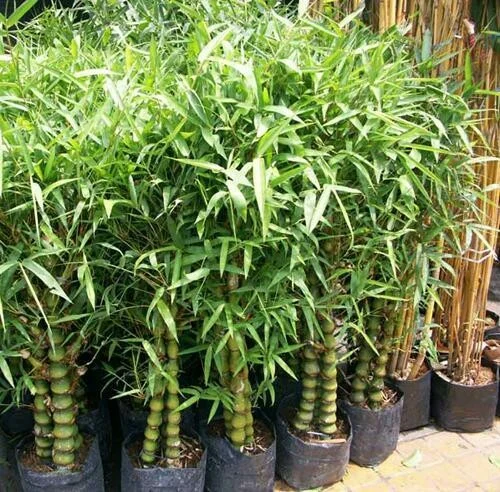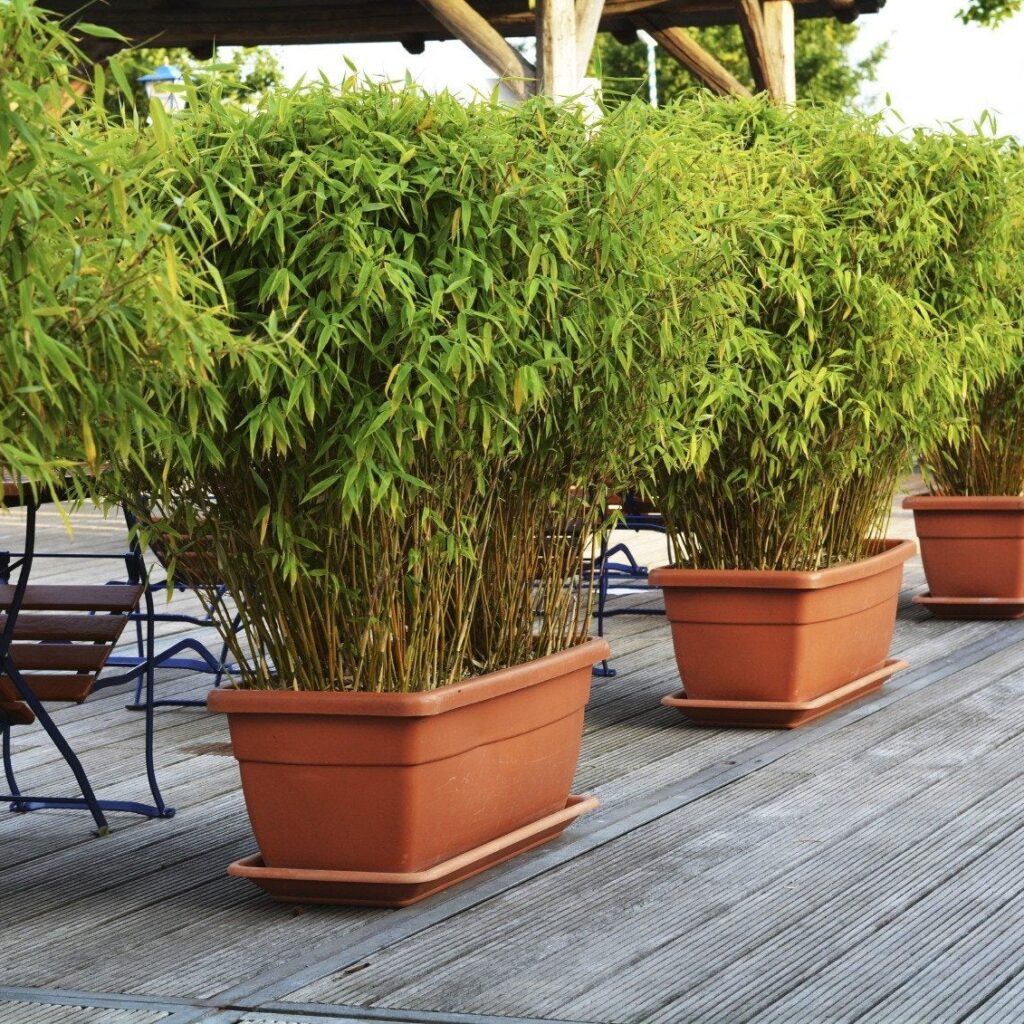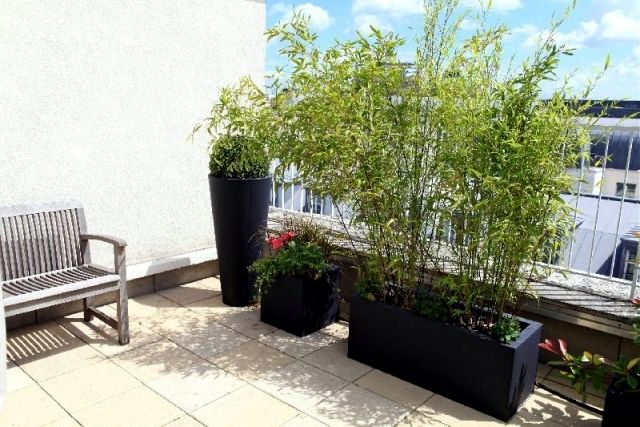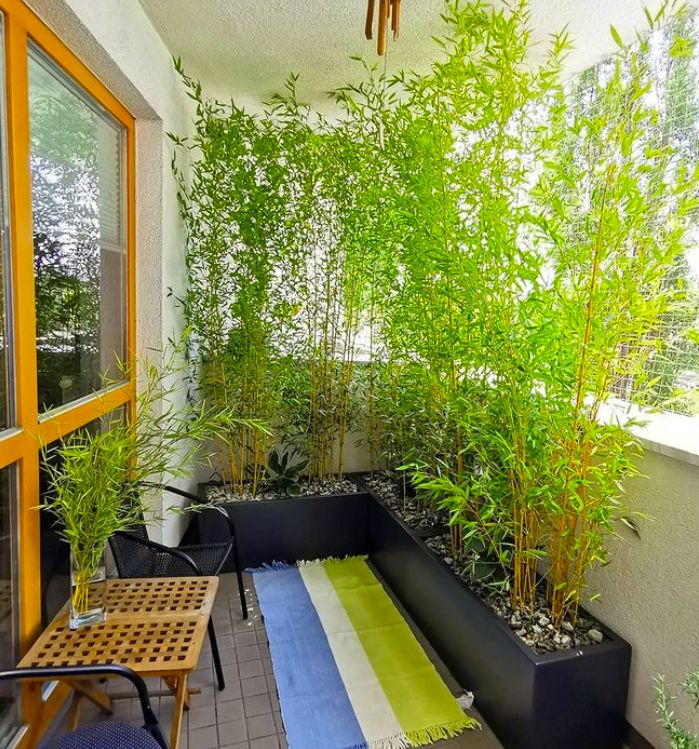Bamboo (family Poaceae) is a versatile, fast-growing plant admired for its elegant appearance, environmental benefits, and functional uses. From sleek indoor decor to lush outdoor landscaping, bamboo adds aesthetic value and a sense of tranquility to any space. Its adaptability, resilience, and sustainability make it a favorite among gardeners, interior designers, and eco-conscious homeowners.
This guide provides a comprehensive step-by-step approach to growing bamboo plants, covering types, planting techniques, care, pest management, and design applications for both indoor and outdoor spaces.
Why Grow Bamboo?

Bamboo is a remarkable plant with multiple advantages:
- Rapid Growth: Certain species grow several feet per month, creating fast privacy screens or indoor greenery.
- Eco-Friendly: Bamboo absorbs carbon dioxide, produces oxygen, and improves air quality.
- Versatility: Suitable for pots, gardens, or landscaping features.
- Low Maintenance: Hardy, drought-tolerant, and pest-resistant.
- Aesthetic Appeal: Elegant stalks and lush foliage create a calming atmosphere indoors or outdoors.
Whether for decoration, privacy, or sustainable landscaping, bamboo is a practical and beautiful choice.
Step 1: Choosing the Right Bamboo Variety
Bamboo is broadly categorized into clumping and running types:
- Clumping Bamboo:
- Grows in tight clusters; slow to spread.
- Ideal for indoor pots or small gardens.
- Examples: Bambusa multiplex, Bambusa ventricosa.
- Running Bamboo:
- Spreads aggressively through underground rhizomes.
- Suitable for large outdoor spaces and creating natural screens.
- Requires containment to prevent invasive growth.
- Examples: Phyllostachys aurea, Phyllostachys nigra.
Selecting the appropriate type is crucial for space management and maintenance.
Step 2: Selecting a Planting Location

Bamboo thrives under proper light and soil conditions:
Outdoor Spaces:
- Sunlight: Most bamboos prefer full sun but can tolerate partial shade.
- Soil: Well-draining, loamy soil enriched with organic matter.
- Space: Ensure enough room for clumping or contain running bamboo to prevent overgrowth.
Indoor Spaces:
- Light: Bright, indirect sunlight is ideal. Avoid harsh direct sunlight on indoor varieties.
- Containers: Use large pots with drainage holes to accommodate fast-growing roots.
- Humidity: Moderate humidity levels enhance growth indoors.
Step 3: Preparing the Soil

Healthy soil ensures strong bamboo growth:
- Soil Type: Light loamy soil with good drainage.
- Soil Enrichment: Mix compost or well-rotted manure for nutrients.
- pH Level: Slightly acidic to neutral soil (pH 6.0–7.0) is ideal.
- Mulching: Apply mulch around outdoor bamboo to retain moisture and regulate temperature.
For indoor planting, a potting mix with peat, sand, and compost works best.
Step 4: Planting Bamboo
Outdoor Planting:
- Dig a hole twice the width of the root ball.
- Place the bamboo in the hole and backfill with enriched soil.
- Water thoroughly to settle soil around the roots.
- Space clumping bamboos 3–5 feet apart; running varieties require containment measures like rhizome barriers.
Indoor Planting:
- Select a pot 2–3 inches larger than the root ball.
- Fill with a well-draining potting mix.
- Plant bamboo at the same depth as the nursery container.
- Water immediately and place in bright, indirect light.
Step 5: Watering and Fertilization

Bamboo requires consistent moisture and adequate nutrients:
- Watering:
- Keep soil consistently moist but not waterlogged.
- Outdoor bamboo may require 1–2 inches of water per week; indoor plants benefit from frequent light watering.
- Fertilization:
- Use high-nitrogen fertilizer during the growing season to promote lush foliage.
- Apply compost or organic fertilizer monthly for potted plants.
- Reduce fertilization during dormant periods.
Mulching further conserves moisture and maintains soil fertility.
Step 6: Pruning and Maintenance

Regular maintenance keeps bamboo healthy and aesthetically pleasing:
- Pruning:
- Remove dead or weak culms (stalks) to allow new growth.
- Thin dense clumps to prevent overcrowding.
- For indoor plants, trim leaves to maintain shape and size.
- Containment for Running Bamboo:
- Install underground barriers or plant in large containers to prevent invasive spread.
- Pest Management:
- Bamboo is generally pest-resistant.
- Occasionally check for aphids, mites, or scale insects; use insecticidal soap if necessary.
Step 7: Propagation Techniques
Bamboo can be propagated in several ways:
- Division: Separate clumps with roots and replant.
- Rhizome Cuttings: Cut sections of underground stems with nodes and plant in soil.
- Culm Cuttings: Cut sections of young shoots and plant in moist soil or water until roots form.
Division is the easiest and most reliable method for home gardeners.
Step 8: Indoor Bamboo Care Tips
Indoor bamboo requires special attention for healthy growth:
- Lighting: Place near a bright window with indirect sunlight.
- Humidity: Mist leaves regularly to prevent dryness.
- Pot Size: Use containers large enough for root expansion.
- Fertilizer: Apply liquid fertilizer monthly during growing season.
- Pruning: Trim yellowing or overgrown leaves for aesthetics.
Step 9: Outdoor Bamboo Care Tips
Outdoor bamboo benefits from space, nutrients, and seasonal care:
- Sunlight: Ensure 4–6 hours of direct sunlight for optimal growth.
- Watering: Deep, consistent watering encourages robust root systems.
- Mulching: Apply 2–3 inches of mulch to maintain soil temperature and moisture.
- Winter Protection: Mulch heavily in colder climates to prevent frost damage.
Step 10: Using Bamboo in Landscaping
Bamboo is highly versatile in garden and home design:
- Privacy Screens: Tall clumping or running varieties create natural barriers.
- Ornamental Features: Use bamboo in pots, borders, or garden corners for aesthetic appeal.
- Indoor Decor: Elegant stems enhance interiors and improve air quality.
- Erosion Control: Outdoor bamboo stabilizes soil on slopes.
- Zen Gardens: Bamboo adds tranquility and a natural aesthetic to meditation spaces.
Step 11: Tips for Maximum Growth and Longevity
- Choose the right species for indoor or outdoor conditions.
- Provide consistent water and nutrients for lush foliage.
- Prune regularly to encourage healthy growth and shape.
- Control spread of running varieties with barriers.
- Monitor for pests and remove affected leaves promptly.
- Repot or divide every 2–3 years to prevent root congestion in containers.
Conclusion
Growing bamboo in indoor or outdoor spaces is an exciting and rewarding endeavor. Its rapid growth, aesthetic appeal, and environmental benefits make it an excellent choice for both beginners and experienced gardeners.
By selecting suitable varieties, preparing soil properly, planting carefully, and following consistent care practices—including watering, fertilization, pruning, and containment—home gardeners can enjoy lush bamboo plants year-round.
Whether used as a natural privacy screen, indoor decorative plant, or a key element in a serene garden, bamboo adds beauty, sustainability, and tranquility to any space. With patience and proper attention, your





